Some parts of Trump’s proposed budget for NASA are literally draconian
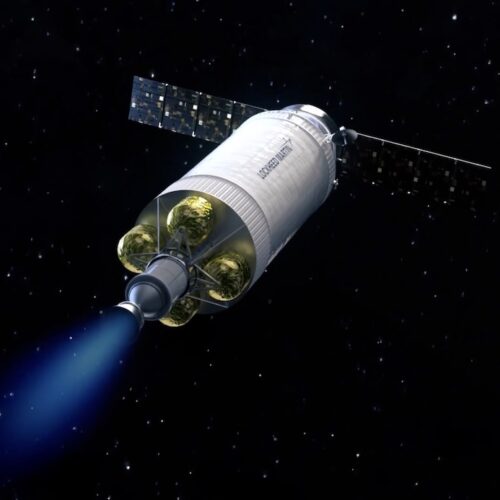
New details of the Trump administration’s plans for NASA, released Friday, revealed the White House’s desire to end the development of an experimental nuclear thermal rocket engine that could have shown a new way of exploring the Solar System.
Trump’s NASA budget request is rife with spending cuts. Overall, the White House proposes reducing NASA’s budget by about 24 percent, from $24.8 billion this year to $18.8 billion in fiscal year 2026. In previous stories, Ars has covered many of the programs impacted by the proposed cuts, which would cancel the Space Launch System rocket and Orion spacecraft and terminate numerous robotic science missions, including the Mars Sample Return, probes to Venus, and future space telescopes.
Instead, the leftover funding for NASA’s human exploration program would go toward supporting commercial projects to land on the Moon and Mars.
NASA’s initiatives to pioneer next-generation space technologies are also hit hard in the White House’s budget proposal. If the Trump administration gets its way, NASA’s Space Technology Mission Directorate, or STMD, will see its budget cut nearly in half, from $1.1 billion to $568 million.
Trump’s budget request isn’t final. Both Republican-controlled houses of Congress will write their own versions of the NASA budget, which must be reconciled before going to the White House for President Trump’s signature.
“The budget reduces Space Technology by approximately half, including eliminating failing space propulsion projects,” the White House wrote in an initial overview of the NASA budget request released May 2. “The reductions also scale back or eliminate technology projects that are not needed by NASA or are better suited to private sector research and development.”
Breathing fire
Last week, the White House and NASA put a finer point on these “failing space propulsion projects.”
“This budget provides no funding for Nuclear Thermal Propulsion and Nuclear Electric Propulsion projects,” officials wrote in a technical supplement released Friday detailing Trump’s NASA budget proposal. “These efforts are costly investments, would take many years to develop, and have not been identified as the propulsion mode for deep space missions. The nuclear propulsion projects are terminated to achieve cost savings and because there are other nearer-term propulsion alternatives for Mars transit.”
Foremost among these cuts, the White House proposes to end NASA’s participation in the Demonstration Rocket for Agile Cislunar Operations (DRACO) project. NASA said this proposal “reflects the decision by our partner to cancel” the DRACO mission, which would have demonstrated a nuclear thermal rocket engine in space for the first time.
NASA’s partner on the DRACO mission was the Defense Advanced Research Projects Agency, or DARPA, the Pentagon’s research and development arm. A DARPA spokesperson confirmed the agency was closing out the project.
“DARPA has completed the agency’s involvement in the Demonstration Rocket for Agile Cislunar Orbit (DRACO) program and is transitioning its knowledge to our DRACO mission partner, the National Aeronautics and Space Administration (NASA), and to other potential DOD programs,” the spokesperson said in a response to written questions.
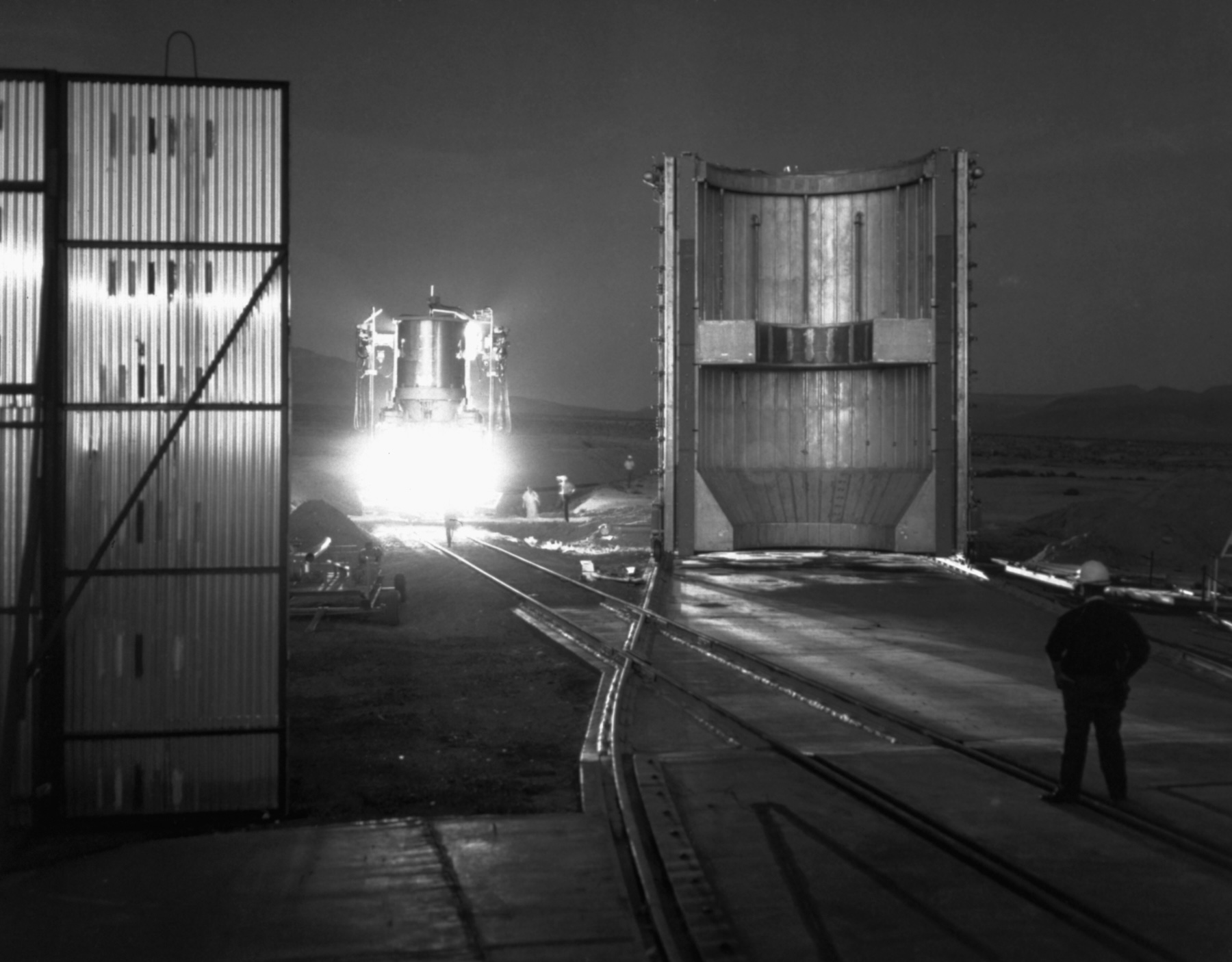
A nuclear rocket engine, which was to be part of NASA’s aborted NERVA program, is tested at Jackass Flats, Nevada, in 1967.
Credit:
Corbis via Getty Images)
Less than two years ago, NASA and DARPA announced plans to move forward with the roughly $500 million DRACO project, targeting a launch into Earth orbit aboard a traditional chemical rocket in 2027. “With the help of this new technology, astronauts could journey to and from deep space faster than ever, a major capability to prepare for crewed missions to Mars,” former NASA administrator Bill Nelson said at the time.
The DRACO mission would have consisted of several elements, including a nuclear reactor to rapidly heat up super-cold liquid hydrogen fuel stored in an insulated tank onboard the spacecraft. Temperatures inside the engine would reach nearly 5,000° Fahrenheit, boiling the hydrogen and driving the resulting gas through a nozzle, generating thrust. From the outside, the spacecraft’s design looks a lot like the upper stage of a traditional rocket. However, theoretically, a nuclear thermal rocket engine like DRACO’s would offer twice the efficiency of the highest-performing conventional rocket engines. That translates to significantly less fuel that a mission to Mars would have to carry across the Solar System.
Essentially, a nuclear thermal rocket engine combines the high-thrust capability of a chemical engine with some of the fuel efficiency benefits of low-thrust solar-electric engines. With DRACO, engineers sought hard data to verify their understanding of nuclear propulsion and wanted to make sure the nuclear engine’s challenging design actually worked. DRACO would have used high-assay low-enriched uranium to power its nuclear reactor.
Nuclear electric propulsion uses an onboard nuclear reactor to power plasma thrusters that create thrust by accelerating an ionized gas, like xenon, through a magnetic field. Nuclear electric propulsion would provide another leap in engine efficiency beyond the capabilities of a system like DRACO and may ultimately offer the most attractive option for enduring deep space transportation.
NASA led the development of DRACO’s nuclear rocket engine, while DARPA was responsible for the overall spacecraft design, operations, and the thorny problem of securing regulatory approval to launch a nuclear reactor into orbit. The reactor on DRACO would have launched in “cold” mode before activating in space, reducing the risk to people on the ground in the event of a launch accident. The Space Force agreed to pay for DRACO’s launch on a United Launch Alliance Vulcan rocket.
DARPA and NASA selected Lockheed Martin as the lead contractor for the DRACO spacecraft in 2023. BWX Technologies, a leader in the US nuclear industry, won the contract to develop the mission’s reactor.
“We received the notice from DARPA that it ended the DRACO program,” a Lockheed Martin spokesperson said. “While we’re disappointed with the decision, it doesn’t change our vision of how nuclear power influences how we will explore and operate in the vastness of space.”
Mired in the lab
More than 60 years have passed since a US-built nuclear reactor launched into orbit. Aviation Week reported in January that one problem facing DRACO engineers involved questions about how to safely test the nuclear thermal engine on the ground while adhering to nuclear safety protocols.
“We’re bringing two things together—space mission assurance and nuclear safety—and there’s a fair amount of complexity,” said Matthew Sambora, a DRACO program manager at DARPA, in an interview with Aviation Week. At the time, DARPA and NASA had already given up on a 2027 launch to concentrate on developing a prototype engine using helium as a propellant before moving on to an operational engine with more energetic liquid hydrogen fuel, Aviation Week reported.
Greg Meholic, an engineer at the Aerospace Corporation, highlighted the shortfall in ground testing capability in a presentation last year. Nuclear thermal propulsion testing “requires that engine exhaust be scrubbed of radiologics before being released,” he wrote. This requirement “could result in substantially large, prohibitively expensive facilities that take years to build and qualify.”
These safety protocols weren’t as stringent when NASA and the Air Force first pursued nuclear propulsion in the 1960s. Now, the first serious 21st-century effort to fly a nuclear rocket engine in space is grinding to a halt.
“Given that our near-term human exploration and science needs do not require nuclear propulsion, current demonstration projects will end,” wrote Janet Petro, NASA’s acting administrator, in a letter accompanying the Trump administration’s budget release last week.
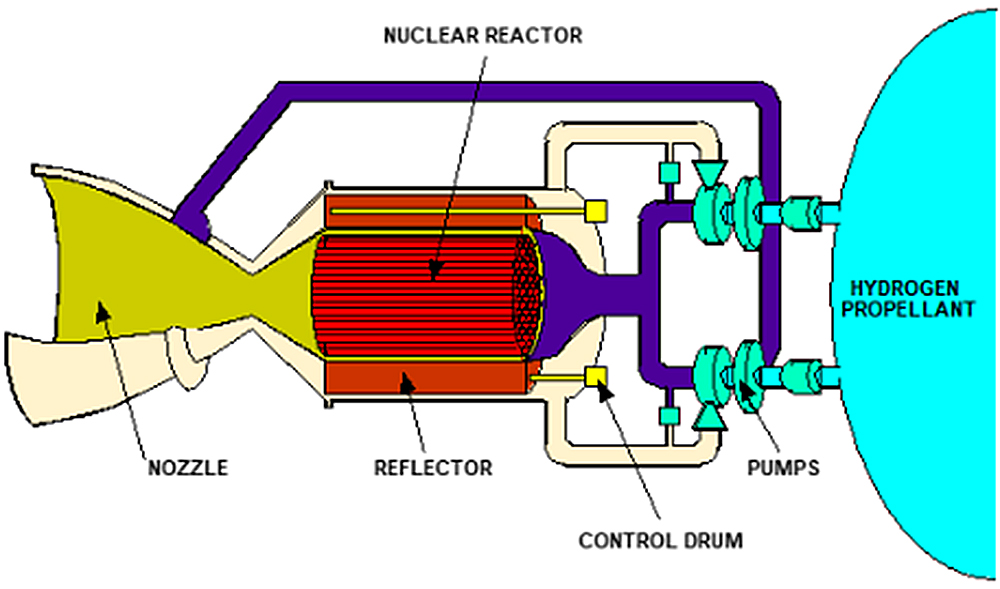
NASA’s 2024 budget allocated $117 million for nuclear propulsion work, an increase from $91 million the previous year. Congress added more funding for NASA’s nuclear propulsion programs over the Biden administration’s proposed budget in recent years, signaling support on Capitol Hill that may save at least some nuclear propulsion initiatives next year.
It’s true that nuclear propulsion isn’t required for any NASA missions currently on the books. Today’s rockets are good at hurling cargo and people off planet Earth, but once a spacecraft arrives in orbit, there are several ways to propel it toward more distant destinations.
NASA’s existing architecture for sending astronauts to the Moon uses the SLS rocket and Orion spacecraft, both of which are proposed for cancellation and look a lot like the vehicles NASA used to fly astronauts to the Moon more than 50 years ago. SpaceX’s reusable Starship, designed with an eye toward settling Mars, uses conventional chemical propulsion, with methane and liquid oxygen propellants that SpaceX one day hopes to generate on the surface of the Red Planet.
So NASA, SpaceX, and other companies don’t need nuclear propulsion to beat China back to the Moon or put the first human footprints on Mars. But there’s a broad consensus that in the long run, nuclear rockets offer a better way of moving around the Solar System.
The military’s motive for funding nuclear thermal propulsion was its potential for becoming a more efficient means of maneuvering around the Earth. Many of the military’s most important spacecraft are limited by fuel, and the Space Force is investigating orbital refueling and novel propulsion methods to extend the lifespan of satellites.
NASA’s nuclear power program is not finished. The Trump administration’s budget proposal calls for continued funding for the agency’s fission surface power program, with the goal of fielding a nuclear reactor that could power a base on the surface of the Moon or Mars. Lockheed and BWXT, the contractors involved in the DRACO mission, are part of the fission surface power program.
There is some funding in the White House’s budget request for tech demos using other methods of in-space propulsion. NASA would continue funding experiments in long-term storage and transfer of cryogenic propellants like liquid methane, liquid hydrogen, and liquid oxygen. These joint projects between NASA and industry could pave the way for orbital refueling and orbiting propellant depots, aligning with the direction of companies like SpaceX, Blue Origin, and United Launch Alliance.
But many scientists and engineers believe nuclear propulsion offers the only realistic path for a sustainable campaign ferrying people between the Earth and Mars. A report commissioned by NASA and the National Academies concluded in 2021 that an aggressive tech-development program could advance nuclear thermal propulsion enough for a human expedition to Mars in 2039. The prospects for nuclear electric propulsion were murkier.
This would have required NASA to substantially increase its budget for nuclear propulsion immediately, likely by an order of magnitude beyond the agency’s baseline funding level, or to an amount exceeding $1 billion per year, said Bobby Braun, co-chair of the National Academies report, in a 2021 interview with Ars. That didn’t happen.
Going nuclear
The interplanetary transportation architectures envisioned by NASA and SpaceX will, at least initially, primarily use chemical propulsion for the cruise between Earth and Mars.
Kurt Polzin, chief engineer of NASA’s space nuclear propulsion projects, said significant technical hurdles stand in the way of any propulsion system selected to power heavy cargo and humans to Mars.
“Anybody who says that they’ve solved the problem, you don’t know that because you don’t have enough data,” Polzin said last week at the Humans to the Moon and Mars Summit in Washington.
“We know that to do a Mars mission with a Starship, you need lots of refuelings at Earth, you need lots of refuelings at Mars, which you have to send in advance,” Polzin said. “You either need to send that propellant in advance or send a bunch of material and hardware to the surface to be set up and robotically make your propellant in situ while you’re there.”
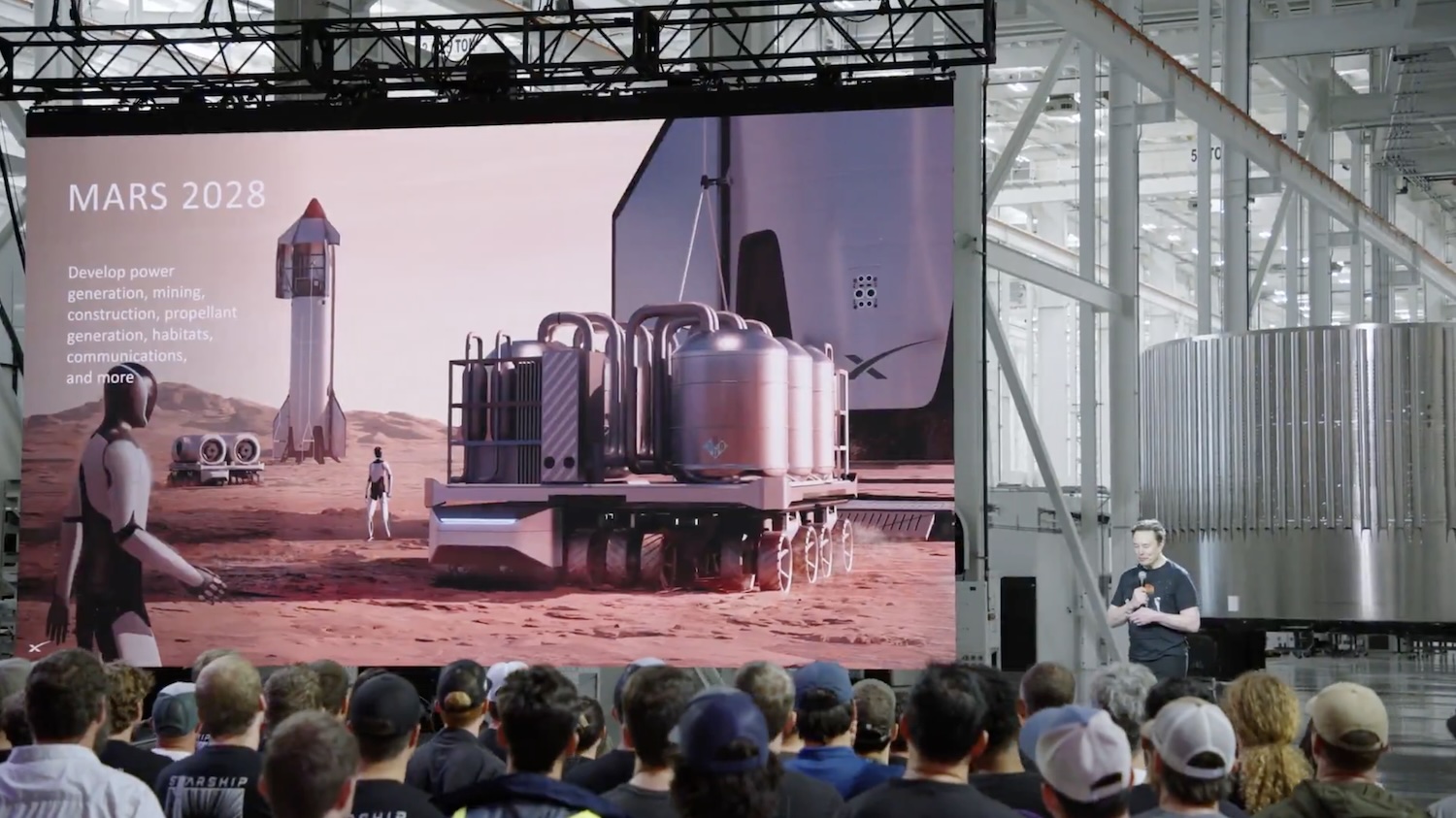
Elon Musk’s SpaceX is betting on chemical propulsion for round-trip flights to Mars with its Starship rocket. This will require assembly of propellant-generation plants on the Martian surface.
Credit:
SpaceX
Last week, SpaceX founder Elon Musk outlined how the company plans to land its first Starships on Mars. His roadmap includes more than 100 cargo flights to deliver equipment to produce methane and liquid oxygen propellants on the surface of Mars. This is necessary for any Starship to launch off the Red Planet and return to Earth.
“You can start to see that this starts to become a Rube Goldberg way to do Mars,” Polzin said. “Will I say it can’t work? No, but will I say that it’s really, really difficult and challenging. Are there a lot of miracles to make it work? Absolutely. So the notion that SpaceX has solved Mars or is going to do Mars with Starship, I would challenge that on its face. I don’t think the analysis and the data bear that out.”
Engineers know how methane-fueled rocket engines perform in space. Scientists have created liquid oxygen and liquid methane since the late 1800s. Scaling up a propellant plant on Mars to produce thousands of tons of cryogenic liquids is another matter. In the long run, this might be a suitable solution for Musk’s vision of creating a city on Mars, but it comes with immense startup costs and risks. Still, nuclear propulsion is an entirely untested technology as well.
“The thing with nuclear is there are challenges to making it work, too,” Polzin said. “However, all of my challenges get solved here at Earth and in low-Earth orbit before I leave. Nuclear is nice. It has a higher specific impulse, especially when we’re talking about nuclear thermal propulsion. It has high thrust, which means it will get our astronauts there and back quickly, but I can carry all the fuel I need to get back with me, so I don’t need to do any complicated refueling at Mars. I can return without having to make propellant or send any pre-positioned propellant to get back.”
The tug of war over nuclear propulsion is nothing new. The Air Force started a program to develop reactors for nuclear thermal rockets at the height of the Cold War. NASA took over the Air Force’s role a few years later, and the project proceeded into the next phase, called the Nuclear Engine for Rocket Vehicle Application (NERVA). President Richard Nixon ultimately canceled the NERVA project in 1973 after the government had spent $1.4 billion on it, equivalent to about $10 billion in today’s dollars. Despite nearly two decades of work, NERVA never flew in space.
Doing the hard things
The Pentagon and NASA studied several more nuclear thermal and nuclear electric propulsion initiatives before DRACO. Today, there’s a nascent commercial business case for compact nuclear reactors beyond just the government. But there’s scant commercial interest in mounting a full-scale nuclear propulsion demonstration solely with private funding.
Fred Kennedy, co-founder and CEO of a space nuclear power company called Dark Fission, said most venture capital investors lack the appetite to wait for financial returns in nuclear propulsion that they may see in 15 or 20 years.
“It’s a truism: Space is hard,” said Kennedy, a former DARPA program manager. “Nuclear turns out to be hard for reasons we can all understand. So space-nuclear is hard-squared, folks. As a result, you give this to your average associate at a VC firm and they get scared quick. They see the moles all over your face, and they run away screaming.”
But commercial launch costs are coming down. With sustained government investment and streamlined regulations, “this is the best chance we’ve had in a long time” to get a nuclear propulsion system into space, Kennedy said.
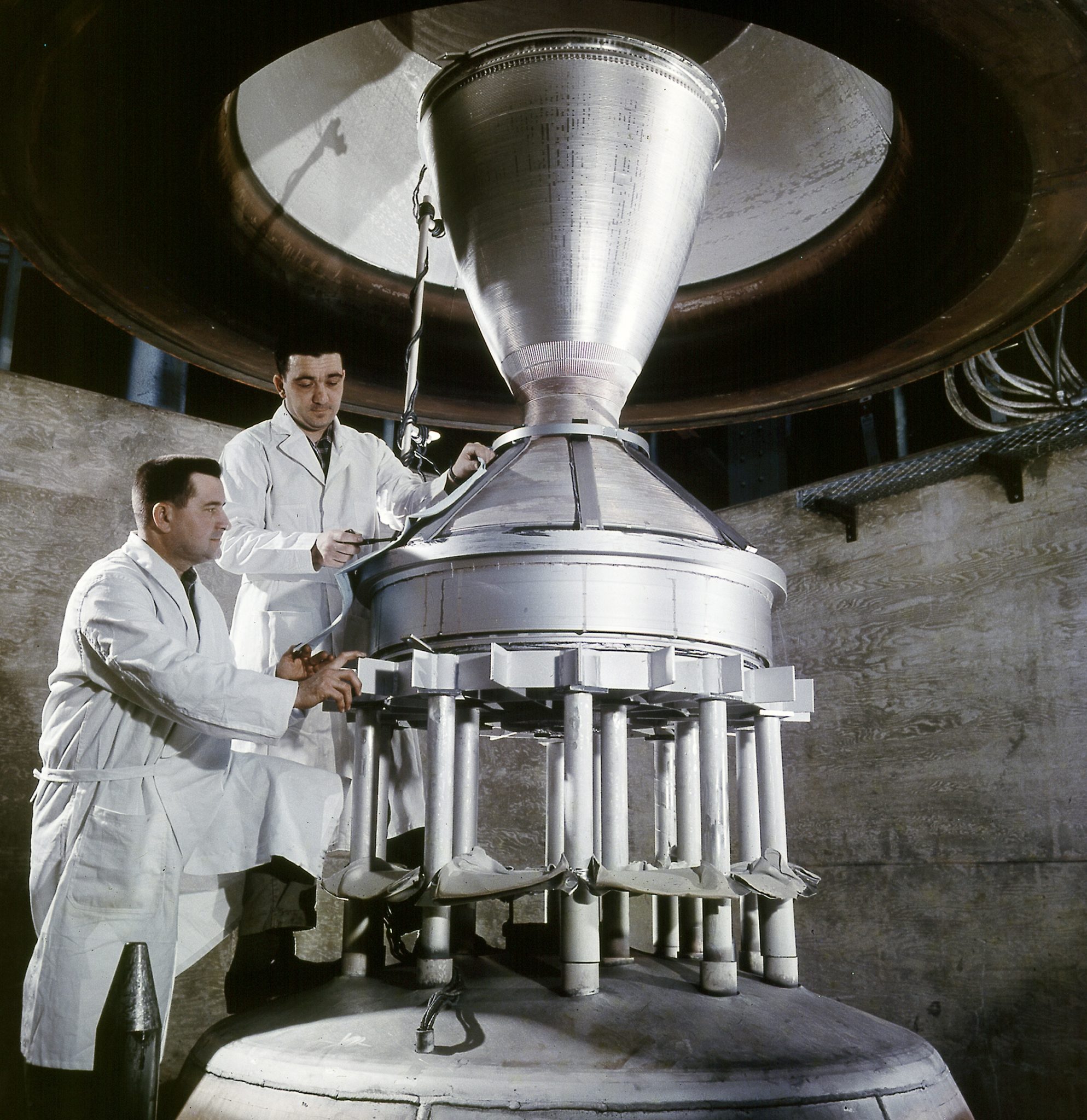
“I think, right now, we’re in this transitional period where companies like mine are going have to rely on some government largesse, as well as hopefully both commercial partnerships and honest private investment,” Kennedy said. “Three years ago, I would have told you I thought I could have done the whole thing with private investment, but three years have turned my hair white.”
Those who share Kennedy’s view thought they were getting an ally in the Trump administration. Jared Isaacman, the billionaire commercial astronaut Trump nominated to become the next NASA administrator, promised to prioritize nuclear propulsion in his tenure as head of the nation’s space agency.
During his Senate confirmation hearing in April, Isaacman said NASA should turn over management of heavy-lift rockets, human-rated spacecraft, and other projects to commercial industry. This change, he said, would allow NASA to focus on the “near-impossible challenges that no company, organization, or agency anywhere in the world would be able to undertake.”
The example Isaacman gave in his confirmation hearing was nuclear propulsion. “That’s something that no company would ever embark upon,” he told lawmakers. “There is no obvious economic return. There are regulatory challenges. That’s exactly the kind of thing that NASA should be concentrating its resources on.”
But the White House suddenly announced on Saturday that it was withdrawing Isaacman’s nomination days before the Senate was expected to confirm him for the NASA post. While there’s no indication that Trump’s withdrawal of Isaacman had anything to do with any specific part of the White House’s funding plan, his removal leaves NASA without an advocate for nuclear propulsion and a number of other projects falling under the White House’s budget ax.
Stephen Clark is a space reporter at Ars Technica, covering private space companies and the world’s space agencies. Stephen writes about the nexus of technology, science, policy, and business on and off the planet.













